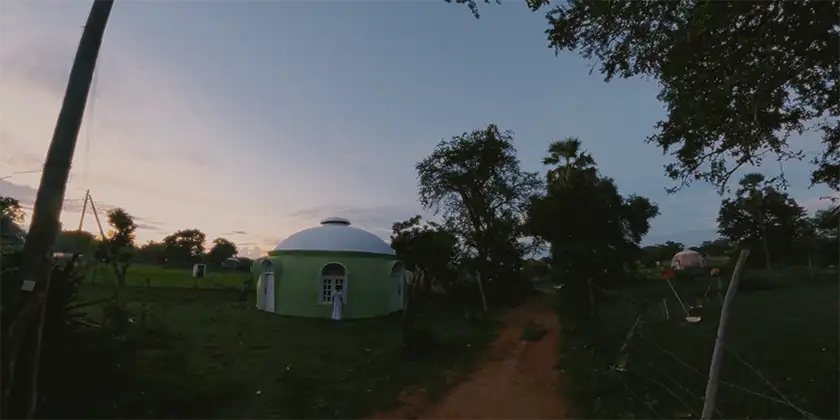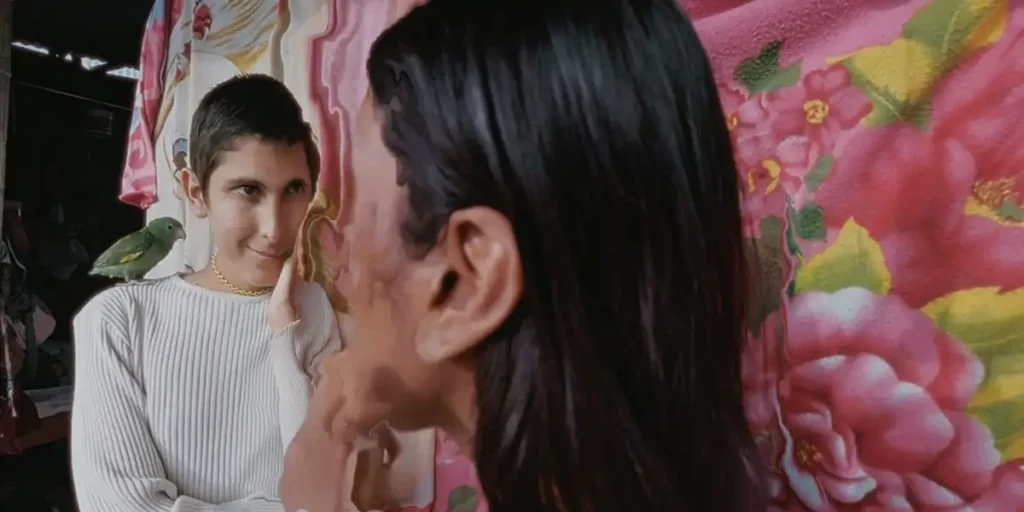The Human Surge 3 is a globe-trotting, fragmented piece about connection and the longing for a better life and richer connections.
Director: Eduardo Williams
Genre: Drama
Run Time: 121′
US Release: June 28, 2024
UK Release: TBA
Where to watch: in select US theaters
In 2016, Argentine director Eduardo Williams tried to silently redefine filmmaking and the visual language as we know it with his Locarno Film Festival Golden Leopard-winning feature, The Human Surge. This fragmentary, mystifying work delved into the alienation of today’s youth and the ways technology serves as both a “safe haven” and a distancing force via a virtual reality-like framing.
This technique helped the film capture the detachment Williams wanted to explore with plenty of sincerity and curiosity while being innovative in his storytelling. His thirst for ingenuity and breaking the mold of this century-spanning art form has led him to make The Human Surge 3, the third part of a trilogy without a middle tie-in picture.
The Human Surge 3 doesn’t share any similarities with the 2016 Locarno hit other than its fractured narrative structure and ethnographic studies of the contemporary youth’s lives across liminal spaces. Eduardo Williams offers a portrait of connection spanning multiple countries, traversing Argentina, Brazil, Peru, Portugal, Netherlands, Taiwan, Hong Kong, and Sri Lanka–around the world in nearly two hours. On paper, it sort of recalls what Alejandro González Iñárritu did with Babel, although the lines Williams draws to connect each country are purposefully scattershot. He uses a poetic verve and an undefined path for its characters to pull them into this singular experience.
The film begins with an extended shot of a beach in an undisclosed country. We hear people having a conversation: they all speak in different languages, yet they understand each other accurately. They talk about escaping their lives momentarily, wanting to hear about their friends’ dreams, and inhabiting them for a second, which immediately draws intrigue and gives you a small taste of what’s to come. The camera never focuses on them but captures the land and sea around them while their voices remain in the background. In the few instances that the characters are seen on screen, there is plenty of distance between them and the camera.
Like these characters who desire to venture into the unknown, you get the feeling that the camera wants to veer away from humanity and go on its own journey. Nature has treated us to some beautiful and sometimes haunting sceneries that leave you in a trance; those who bask upon the allure of nature want to sink in everything around them. The camera almost feels like a ghost watching from above, à la Enter the Void by Gaspar Noé. Both films use cinematography in fascinating, unique ways to travel through time, space, dreams, and memories with a lack of control; while Gaspar’s camera is a representation of a soul looking for a way out of the void, Williams’ ventures into it.

This occurs throughout the entirety of The Human Surge 3. Eduardo Williams and cinematographer Victoria Pereda’s lens wanders on its own like a free spirit going where it pleases. You are never sure where it is headed or what it is interested in focusing on. Sometimes, the camera decides to go to a different country in its entirety, changing locations and perspectives with no end in sight. The freeform rhythm forges a fascinating, dreamy, yet equally ominous atmosphere that fills the entire scenery and the viewer’s mind with uncertainty and disquietude.
Eduardo Williams uses dreams and nightmares as a transportation device for his characters; the moment they close their eyes for a quick sleep, a new world has been designed for them to explore together. It is almost like a videogame, where a group of friends who met online travel through a new map they have downloaded. There are no barriers in the state they are in.
With The Human Surge 3, Eduardo Williams creates a cinematic experience like no other, ditching narrative clarity and character development to make this illusory canvas feel more mind-numbing. Confusion and mystery lay above your head like a grey cloud, forcing you to engage with the surreal and interpret what is occurring. For a good chunk of the film’s runtime, it took a lot of work to come up with a clear thought or analytical response, which frustrated me slightly. But I couldn’t get it out of my head after watching it. I needed to go through this experience immediately and escape to this strange world of universality and no borders. Even when I went to sleep on the days that I visited the world in which The Human Surge 3 is set, I started to conjure similar images in my dreams.
While some directors, like the previously mentioned Iñárritu, would have taken a more literal and vocal approach to expand on the longing for a better life and richer connections, Eduardo Williams does the opposite. He stands back and lets his actors venture off on their own. The Human Surge 3 is a strange picture, with an even stranger rhythm and prose that shouldn’t work. Yet, I was captivated by its dreaminess and unorthodox cinematic nature. The feeling that emerges a few days after watching it is almost indescribable; it is hard to express why it pierces your mind in the way it does. The deeper you are entranced by the Argentine filmmaker’s spell, the more you will be enraptured.
The Human Surge 3 will be released by Grasshopper Film at Brooklyn Academy of Music (BAM) in New York City and at Now-Instant in Los Angeles on June 28, 2024.

